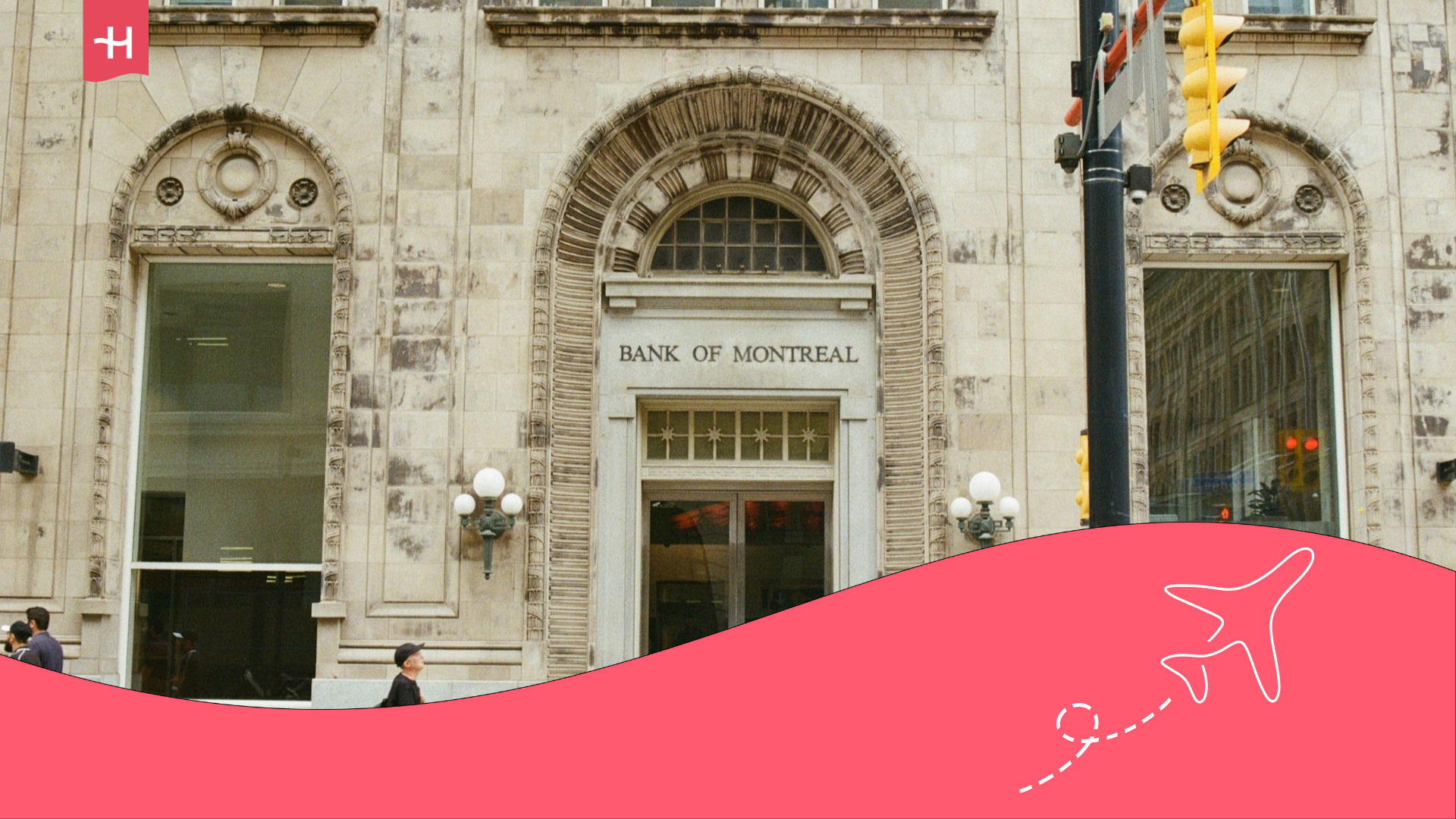Cost of living in Miami: Food, transport, and more
The cost of living in Miami is high, but with good planning and responsible use of money, it is possible to live well.
Turquoise beaches, year-round warm weather, coworking by the sea and a vibrant multicultural community. That’s Miami: One of the favourite destinations for digital nomads and international students who want to combine quality of life with professional opportunities. But beyond the tropical charm, knowing the cost of living in Miami is essential to calculate a monthly budget that lets you live well without going broke. The city can be very tempting for spending money. quality of life
We don’t want that to happen, so today we’ll explain in detail the cost of living in Miami in 2025. You’ll see how much you spend per month on accommodation, food, transport, healthcare, internet and leisure activities. We include prices in dollars and euros, real examples and estimates to help you plan your budget before moving.
Can you live in Miami with less than €1,840 ($2,000) per month? How much does a studio in Downtown cost or eating out in Wynwood or Brickell? What alternatives exist for digital nomads? We’ll answer all that and more!
How does rent impact Miami’s cost of living?
Miami ranks among the most expensive US cities for housing, with accommodation being the biggest expense for those moving for study, remote work or long-stay tourism. Neighbourhoods like Brickell, Wynwood, Downtown or South Beach have high prices, especially for furnished apartments or units with services included. Still, you can cut your budget with coliving, peripheral areas or shared contracts.
Here are the most common options for living in Miami without choosing luxury housing or precarious places. All prices are estimated for stays of at least one month.
1- Furnished apartments
This option is most popular for long stays since you just arrive with your luggage and start living. Most include a fitted kitchen, full furniture, WiFi and sometimes utilities, so you won’t worry about extras. Many buildings also offer gyms, pools or laundry, though these aren’t always in the base price.
Prices depend a lot on location. In central areas like Downtown or Brickell rent ranges between €2,024 ($2,200) and €2,760 ($3,000). In mid-range areas like Little Havana, Coral Way or North Miami, costs drop to €1,472 ($1,600) and €1,932 ($2,100).
2- Coliving: a way to lower your Miami cost of living (if you’re a digital nomad)
The coliving concept, a type of shared housing offering private rooms with common areas like kitchens, coworking spaces and lounges, is trending in Miami. The city attracts many digital nomads, who are the main profile looking for this type of accommodation. Why’s that? Because it provides something this lifestyle values highly: community. Nomad work can feel lonely, and these spaces are perfect to meet people from around the world, build connections and network.
Besides community, coliving spaces include services such as high-speed WiFi, weekly cleaning, social events and many other conveniences. Therefore, they’re another way to move in without worrying about extras. Options like Outsite and Selina exist, but to learn more we recommend our article on the best coliving in Miami.
In terms of costs, a private room ranges between €1,104 ($1,200) and €1,656 ($1,800) per month, while a shared room starts from €644 ($700).
3- Monthly Airbnb
Airbnb is one of the most popular options for those planning to live in Miami, since many hosts give discounts for long stays. Along with coliving, it’s another good choice if you want flexibility without contracts but still value privacy. stay in Miami for a season
Renting an apartment in a mid-range or tourist area can cost between €2,300 ($2,500) and €3,220 ($3,500), while a studio or flat outside the centre starts at €1,656 ($1,800).
Tip: Always check if electricity, water and internet bills are included. If not, you’ll need to budget extra for those.
4- Extended stay hotels
Chains like Extended Stay America, Marriott or Sonder offer reduced monthly rates, making them a practical solution for those wanting everything ready upon arrival. They also include services such as cleaning and breakfast, adding comfort.
How much does it cost? It depends on hotel type and location, but roughly, you’ll pay between €2,208 ($2,400) and €2,944 ($3,200) per month to live in a hotel in Miami.
Comparative table of accommodation costs in Miami
Here’s a table with average prices for different accommodation options in Miami. It’ll help you plan your budget more accurately.
| Type of Housing | USD/month | €/month |
|---|---|---|
| Furnished apartment (central area) | $2,200–3,000 | €2,025–2,760 |
| Furnished apartment (mid-range area) | $1,600–2,100 | €1,472–1,932 |
| Coliving (private room) | $1,200–1,800 | €1,104–1,656 |
| Monthly Airbnb | $1,800–3,500 | €1,656–3,220 |
| Extended stay hotel | $2,400–3,200 | €2,208–2,944 |
Cost of living in Malta: accommodation prices and options

How much does it cost to eat in Miami?
Eating in Miami can be pricey if you rely on delivery or dine out daily. However, if you cook at home and choose local products or generic brands, you’ll keep your budget under control. Supermarkets like Publix, Walmart and Trader Joe’s offer good deals, while Latin markets are often cheaper for fresh produce. On the other hand, eating out in tourist spots like South Beach or Wynwood can cost double compared to restaurants frequented by locals.
Below you’ll find a realistic estimate of grocery costs in Miami, based on prices at Walmart and Trader Joe’s.
| Product | Price (USD) | Price (€) |
|---|---|---|
| 1 kg rice | $3.50 | €3.22 |
| 1 kg pasta | $2.80 | €2.58 |
| 12 eggs | $4.20 | €3.86 |
| 1 litre of whole milk | $1.60 | €1.47 |
| 1 kg chicken breast | $8.00 | €7.36 |
| 1 kg of beef | $12.50 | €11.50 |
| Sliced bread (500 g) | $3.80 | €3.50 |
| Ground coffee (250 g) | $5.00 | €4.60 |
Approximate grocery costs in Miami
Cooking at home with these products, one person spends between €230 ($250) and €322 ($350) monthly, provided they prioritise fresh food and cook regularly.
Now, let’s look at how eating out in Miami restaurants affects your cost of living:
| Food | Price (USD) | Price (€) |
|---|---|---|
| Breakfast (coffee + bread or bowl) | $8.00 | €7.36 |
| Lunch set menu | $12.00 | €11.04 |
| Casual dinner (pizzeria, tacos, etc.) | $18.00 | €16.56 |
| Full dinner in mid-range restaurant | $30.00 | €27.60 |
Eating out costs in Miami
On average, someone eating out once a day spends between €414 ($450) and €552 ($600) monthly only on restaurants. Therefore, the best approach is mixing home cooking with occasional outings to balance the budget.
Is transport expensive in Miami?
Getting around Miami without a car is possible, but it has its limits. While public transport options like the light rail, buses and the free Metromover in Downtown exist, many residents prefer having their own car or using apps like Uber and Lyft.
In general, public transport is affordable, but if you plan to live in outer districts, work in distant coworking spaces or explore areas like Miami Beach or Coral Gables, having a vehicle gives more flexibility.
Here’s a breakdown of what transport means for Miami’s cost of living:
Public transport
The public transport system works well in certain areas, but it doesn’t cover all neighbourhoods efficiently. If you’ll move around a lot, it’s better to buy the monthly pass.
- Metrobus (single ride): €2.07 ($2.25)
- EASY Card (30 days unlimited): €103.50 ($112.50)
- Metromover (Downtown Miami): Free
Uber and similar services
Prices vary greatly depending on time, traffic and special events. Uber is very common for night rides or poorly connected areas.
- Short trip (5 km): $8–12/€7.36–11.04
- Medium ride (10–15 km): $15–22/€13.80–20.24
Petrol and electric cars
Owning an electric car is a practical choice in Miami, especially if you live in a building with chargers. Plus, there are incentives for buying sustainable vehicles.
- Regular petrol (per litre): €0.95 ($1.03)
- Public charging station (per kWh): €0.17 ($0.18)
- Home charging (average): €0.13 ($0.14)
Bike and scooter rentals
These are perfect for short rides and flat areas like the coastal path or Downtown. They’re also handy for casual use.
- Lime or Bird (electric, per 15 minutes): €4.60 ($5)
- Public bike rental per day: $6–8/€5.52–7.36
- CitiBike monthly pass (Miami Beach): €23 ($25)
Car insurance and ownership costs
Owning a car also means paying registration, maintenance and insurance. For many residents, though, it’s almost essential.
- Basic mandatory insurance: From $70/€64.40 (monthly price)
- Full coverage insurance: $120–180/€110–165 (monthly price)
- Popular new car (e.g. Toyota Corolla): €21,160 ($23,000)

How much do healthcare services cost in Miami?
The US healthcare system is among the most expensive worldwide, and Miami is no exception. Unlike many countries, there’s no universal public healthcare, so having a private health insurance plan is practically essential. Even a simple consultation can cost hundreds of dollars without coverage. While some clinics offer reduced rates for uninsured patients, it’s always best to plan ahead for this expense.
Our tip: Whether you’re a digital nomad, student or moving to Miami for a short or long stay, it’s wise to secure health insurance from the very start.
Can foreigners access public healthcare?
No. In the US, only citizens or permanent residents with very low income qualify for Medicaid or Medicare. As a temporary foreigner, you won’t have free medical services. Put simply, you’ll pay everything yourself unless insured.
Private health insurance
Prices depend on age, coverage, whether you buy abroad or locally, and if it’s individual or family cover. Here are average monthly costs:
- Basic international plan for nomads (emergencies only): $50–90/€46–83
- Local private insurance in Miami (individual, full cover): $200–400/€184–368
- Travel plans (SafetyWing, IMG, World Nomads): from $42/€39
Some universities offer insurance to international students, usually costing between $80 and $160 per month.
Estimated costs without insurance
| Medical service | Price (USD) | Price (€) |
|---|---|---|
| General medical consultation | $150–250 | €138–230 |
| Consultation with a specialist | $250–400 | €230–368 |
| Basic dental cleaning | $100–150 | €92–138 |
| Hospital emergency (no admission) | $500–900 | €460–828 |
| Appendix surgery (with hospital stay) | $12,000–20,000 | €11,040–18,400 |
Healthcare costs in Miami without insurance
Costs may vary greatly between private hospitals, community clinics and specialised centres.
How much do internet and phone plans cost in Miami?
A good connection is vital for any digital nomad or student, and in Miami you won’t face issues. The city offers fibre optic, 5G coverage and wide public WiFi access in libraries, cafés and coworking spaces. Prices are slightly higher than in other countries or US regions, especially if you hire standalone services without promotions.
Main providers for home internet in Miami include Xfinity, AT&T and Spectrum. Many packages bundle TV or landline services.
| Speed | Monthly price (USD) | Price (€) |
|---|---|---|
| 100 Mbps (basic) | $40–55 | €36.80–50.60 |
| 300 Mbps (standard) | $60–75 | €55.20–69.00 |
| 1 Gbps (fibre) | $80–100 | €73.60–92.00 |
Home internet plan costs in Miami
Installation fees, modem rental and annual contracts may add to the cost. Many flats include WiFi in rent, especially modern buildings or colivings.
For mobile plans, you’ll find prepaid and postpaid options with providers like T-Mobile, AT&T and Verizon. They include minutes, SMS and data.
| Plan type | Includes | Price (USD) | Price (€) |
|---|---|---|---|
| Basic Prepaid | 5 GB + unlimited calls | $30 | €27.60 |
| Unlimited prepaid (T-Mobile) | Unlimited data and calls | $50 | €46.00 |
| Postpaid with international roaming | Unlimited data in US, Mexico and Canada | $65–85 | €59.80–78.20 |
Top-ups and activations are simple in physical shops or pharmacies like CVS and Walgreens.
How to get unlimited data without contracts?
If you’d rather avoid complications, Holafly monthly plans are the most effective way to stay connected in Miami. Whether you work remotely, study or simply use lots of data, unlimited internet lets you manage all tasks, use apps, maps, video calls and streaming anywhere. The best part is their eSIM is global, working in over 160 countries including the US. All this comes without contracts or losing your WhatsApp number. Holafly monthly plans
With Holafly, you can also enjoy unlimited data through an eSIM for Miami. Just choose the days you need internet and enjoy instant connection without swapping SIM cards or paying roaming fees.
Important: If you are a frequent traveler and want to stay connected without worrying about expensive roaming or looking for a new SIM at every destination, Holafly’s subscription plans are for you. With a single eSIM, enjoy internet in more than 160 countries for a fixed price and no surprises on your bill. Travel without limits and connect easily and securely! 🚀🌍

How much does entertainment in Miami cost?
When it comes to fun, Miami is very tempting. The city offers a vibrant cultural agenda, buzzing nightlife, green spaces and a wide range of outdoor activities. From cinema, theatre and museums to nature parks and water sports, there are plans everyone likes and budget. plans for every taste
Still, just like housing, leisure in Miami can become expensive if you don’t manage outings wisely. To help you make your salary stretch while enjoying what the city offers, here’s a clear idea of recreational and entertainment costs.
| Activity | Price (USD) | Price (€) |
|---|---|---|
| Cinema ticket (general admission) | $14 | €12.90 |
| Local theatre or show | $30–60 | €27.60–55.20 |
| Gym subscription (basic, monthly) | $50–70 | €46–64.40 |
| Club entry | $20–40 | €18.40–36.80 |
| Glass of wine or beer in bar | $9–12 | €8.28–11.04 |
Average leisure costs in Miami
Miami also has free public parks, open beaches all year round and outdoor activities like yoga or cycling. These are ideal for balancing the budget while still enjoying the city.
Do you spend some of your free time watching films and series? If so, this table with streaming platform costs will be useful.
| Service | Monthly price (USD) | Price (€) |
|---|---|---|
| Netflix (standard plan) | $15.49 | €14.20 |
| Spotify Premium individual | $10.99 | €10.10 |
| Disney+ | $7.99 | €7.35 |
| HBO Max | $9.99 | €9.20 |
| YouTube Premium | $13.99 | €12.80 |
Main streaming platform costs
Finally, Miami and its surroundings offer a wide cultural and natural scene. Some sites are free, but many require paid entry:
| Touristic attraction | Entry (USD) | Entry (€) |
|---|---|---|
| Vizcaya Museum and Gardens | $25 | €23 |
| Pérez Art Museum Miami (PAMM) | $16 | €14.70 |
| Miami Zoo | $23 | €21.20 |
| Everglades (basic airboat tour) | $50–70 | €46–64.40 |
| Fairchild Botanical Garden | $25 | €23 |
| Guided Wynwood Walls tour | $12–20 | €11.04–18.40 |
Tourist attraction costs in Miami and nearby areas
Many museums offer free entry on the first Thursday or Sunday of the month. There are also tourist passes combining several attractions at reduced rates.
Conclusion: Is Miami’s cost of living expensive?
Miami is vibrant, cosmopolitan and blessed with one of the most enviable climates in the US. However, it’s not a cheap destination. Rents are high, healthcare is costly without insurance and many leisure activities can impact your budget if you don’t plan carefully. Still, with a smart strategy (sharing housing, cooking at home and taking advantage of free city resources) you can enjoy a comfortable life without breaking the bank.
For remote workers, students or those moving temporarily, Miami offers an excellent mix of connectivity, quality of life, multicultural options and chances to enjoy both leisure and professional growth. Just be ready to face higher monthly costs compared to Latin America or even parts of Europe.

Frequently Asked Questions about the cost of living in Miami
Your monthly budget depends on lifestyle, but to cover housing, food, transport, health insurance and basic leisure, you’ll need at least $2,500 (€2,300). If you choose a cheaper area, shared housing and cooking at home, you could lower it to $2,000/€1,840, though with less margin for extras.
Yes, although differences aren’t huge. Rent in Miami is lower than in New York, but other costs like healthcare, transport and food are similar. On average, living in Miami is 10–15% cheaper than New York and slightly more affordable than Los Angeles, especially without a car.
It’s possible, but it depends on the neighbourhood. In Downtown, Brickell, Wynwood or Coconut Grove, you can move easily with public transport, bikes or walking. The Metromover in central Miami is free. However, if you live in poorly connected areas, you’ll rely on Uber or owning a car, which increases monthly costs.
Yes Although many restaurants are pricey, you’ll find affordable Latin, Caribbean and fast-food places. Supermarkets like Trader Joe’s and Walmart also offer good value. By cooking at home and shopping offers, you can easily spend less than $300 (€285) per month on food.
Yes Many Miami universities offer subsidised health insurance, transport discounts and reduced entry to museums, cinemas and cultural events. They also give free access to libraries, coworking and activities. Just show your student ID.





 Language
Language 


















 No results found
No results found








